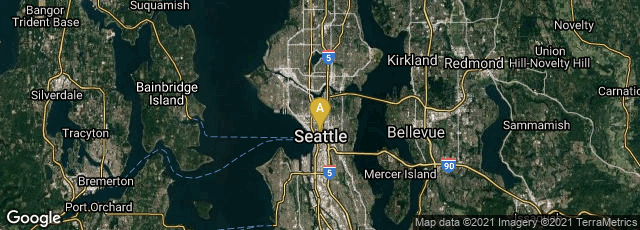

A: Seattle, Washington, United States
IN 1907, using funds supplied by J. Pierpont Morgan, entrepreneur and photographer Edward S. Curtis began publication and sale by subscription in Seattle, Washington, of The North American Indian, Being a Series of Volumes Picturing and Describing the Indians of the United States and Alaska.
The massive work was written and illustrated by Curtis, and edited by anthropologist Frederick Webb Hodge. Volume one contained an introduction by Theodore Roosevelt. The original publication project was intended to occur over five years. Twenty-three years later the work was finally complete, in 20 volumes of text and illustrations, and 20 large portfolios, including 723 leaves of photogravure reproductions of photographs.
"This publication follows the nineteenth-century Euro-American tradition of capturing the 'otherness' of indigenous American Indian life in photography and narrative chronicles. It is set apart by its ambitious scale, and by the striking effect of its images, which are essentially contrived reconstructions rather than true documentation.
"Originally planned for five years, the complicated project was slowed by prohibitive expenses. Public reception was mixed. Less than half of 500 projected sets were printed. Scholars, while interested in staff notes on vocabulary and lore, were dubious of Curtis’s methods of observation. In the 1970s the photographs began to enjoy a nostalgic revival in reprints, and have had a lasting, if controversial, influence on views of the American Indian" (http://curtis.library.northwestern.edu/curtis/aboutwork.html).
"The lavishly illustrated volumes were printed on the finest paper (Dutch etching stock or Japanese tissue paper) and bound in expensive leather, making the price prohibitive for all but the most avid collectors and libraries.
"Subscriptions started at $3000 on the Van Gelder paper in 1907; by 1924 the base price had risen to $4200.
"Although the plan was to sell 500 sets, it appears that Curtis secured just over 220 subscriptions over the course of the project, and printed less than 300 sets.
"In 1935 the assets of the project were liquidated, and the remaining materials were sold to the Charles Lauriat Company, a rare book dealer in Boston. Lauriat acquired nineteen unsold sets of The North American Indian, thousands of individual prints, sheets of unbound paper, and the handmade copper photogravure plates. The book dealer printed a sales brochure and sold nearly seventy more sets at the reduced price of $1245 each. The sets sold apparently included the nineteen remaining original sets plus additional ones made up from loose sheets and newly printed plates" (http://curtis.library.northwestern.edu/curtis/description.html).